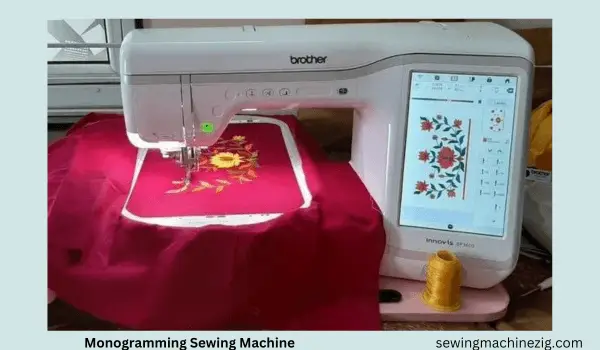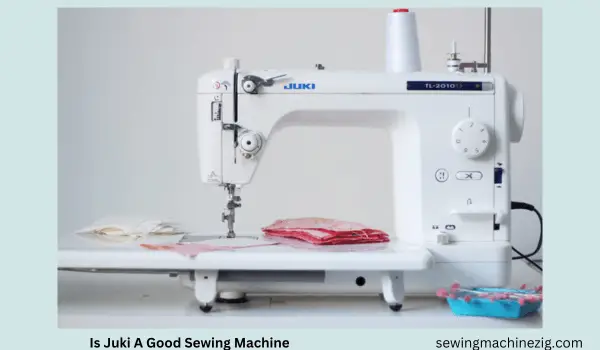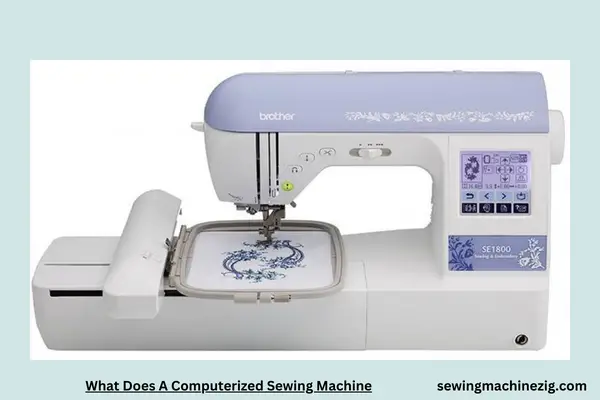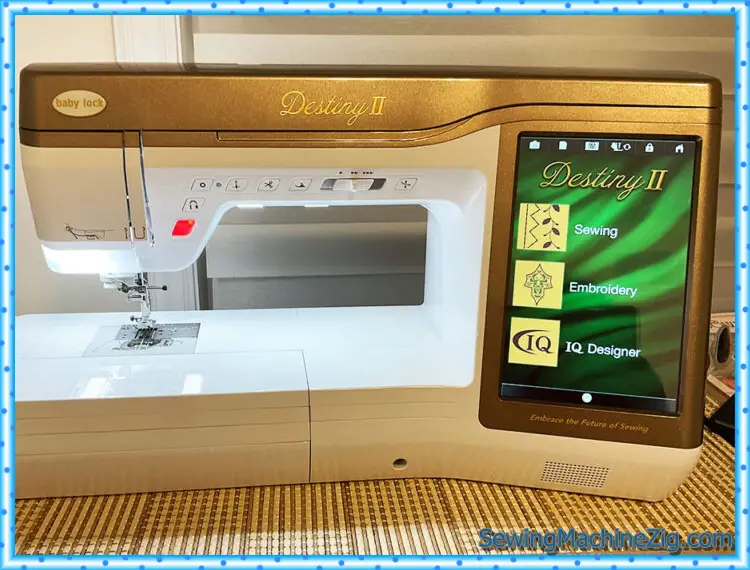
A computerized sewing machine is a modern type of sewing machine that uses computer technology to automate and streamline the sewing process. With its advanced features and capabilities, this machine has revolutionized the way we sew and create our projects. Unlike traditional machines, computerized sewing machines come equipped with a digital screen, which allows you to select and adjust settings with ease.
Thank you for reading this post, don't forget to subscribe!As I mentioned above how to use a computerized sewing machine so it is important for you to know this article, Computerized sewing machines also come with built-in memory that allows you to save and access your favorite stitch patterns and designs, making them a convenient tool for creating intricate and unique projects. Additionally, these machines often have advanced features such as automatic thread cutting, needle positioning, and tension control, which take the hassle out of sewing and ensure a professional finish.
Whether you’re a beginner or an experienced sewer, a computerized sewing machine is a valuable tool that can help you achieve your sewing goals with precision and ease.
What Is The Benefit Of A Computerized Sewing Machine?
Computerized sewing machines offer several benefits over traditional mechanical machines. Here is a step-by-step breakdown of some of these benefits:
- Advanced Features: One of the biggest benefits of computerized sewing machines is that they offer advanced features that can make your sewing experience easier and more efficient. These features can include automatic thread cutting, automatic needle threading, and a variety of built-in stitch options.
- Precision Stitching: Computerized machines use advanced technology to ensure precise stitching. This means that you can create more intricate designs with greater accuracy, as the machine will automatically adjust the tension and stitch length to create the perfect stitch.
- Time-Saving: With a computerized sewing machine, you can save time by automating certain tasks. For example, you can program the machine to cut the thread automatically at the end of a seam or to sew a buttonhole in just a few seconds.
- Memory Function: Many computerized sewing machines come with a memory function, which allows you to save your favorite stitch patterns and settings. This means that you can easily recall them the next time you use the machine.
- Ease of Use: Computerized sewing machines are generally easier to use than traditional mechanical machines. They often come with a touchscreen display, which makes it easy to select the desired stitch and adjust the settings. This means that even beginners can quickly get started with sewing.
- Consistency: Because computerized machines are so precise, you can expect consistent results every time you sew. This means that you can create professional-looking garments and crafts with ease.
Overall, a computerized sewing machine can offer a range of benefits that can make your sewing experience more efficient, precise, and enjoyable.
How To Use A Computerized Sewing Machine Detailed Guide
Using a computerized sewing machine is relatively easy and straightforward once you get the hang of it. Here is a detailed guide on how to use a computerized sewing machine:
- Familiarize yourself with the machine:
Before using the machine, take some time to read the instruction manual thoroughly. Familiarize yourself with the different parts of the machine, including the touchscreen display, the foot pedal, and the various buttons and knobs.
- Thread the machine:
Make sure that the machine is properly threaded before you start sewing. Follow the threading guide in the instruction manual, and use the appropriate thread for your project.
- Select the stitch:
Choose the stitch that you want to use from the touchscreen display. Most computerized sewing machines have a wide variety of built-in stitch patterns to choose from, including straight stitch, zigzag stitch, and decorative stitches.
- Adjust the settings:
Once you have selected the stitch, you can adjust the settings to suit your project. For example, you may need to adjust the stitch length and width, the tension, and the presser foot pressure.
- Practice on scrap fabric:
Before you start sewing on your actual project, it’s a good idea to practice on some scrap fabric. This will help you get a feel for the machine and make any necessary adjustments to the settings.
- Start sewing:
Once you are ready to start sewing, position the fabric under the needle and press down on the foot pedal. The machine will start sewing automatically, and you can guide the fabric as needed.
- Finish the seam:
When you reach the end of the seam, release the foot pedal and lift the needle. Use the automatic thread cutter (if available) or cut the thread with scissors. Then, remove the fabric from the machine.
- Save your settings:
If you are using a computerized sewing machine with a memory function, you may want to save your stitch settings for future use. Follow the instructions in the manual to do this.
- Clean and maintain the machine:
After you are done sewing, make sure to clean and maintain the machine according to the manufacturer’s instructions. This will help keep it in good working condition and extend its lifespan.
With practice, using a computerized sewing machine can become second nature. Just be patient, take your time, and follow the instructions in the manual, and you’ll be sewing like a pro in no time!
How Do You Use A Computerized Brother Sewing Machine?
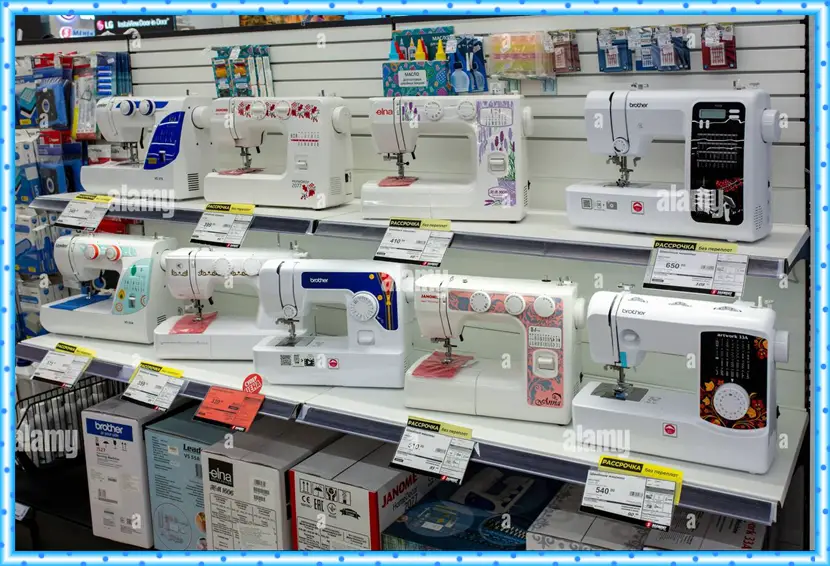
Here are the general steps for using a computerized Brother sewing machine:
- Familiarize yourself with the machine:
Before using the machine, take some time to read the instruction manual thoroughly. Familiarize yourself with the different parts of the machine, including the touchscreen display, the foot pedal, and the various buttons and knobs.
- Thread the machine:
Make sure that the machine is properly threaded before you start sewing. Follow the threading guide in the instruction manual, and use the appropriate thread for your project.
- Select the stitch:
Choose the stitch that you want to use from the touchscreen display. Brother sewing machines have a wide variety of built-in stitch patterns to choose from, including straight stitch, zigzag stitch, and decorative stitches.
- Adjust the settings:
Once you have selected the stitch, you can adjust the settings to suit your project. For example, you may need to adjust the stitch length and width, the tension, and the presser foot pressure.
- Practice on scrap fabric:
Before you start sewing on your actual project, it’s a good idea to practice on some scrap fabric. This will help you get a feel for the machine and make any necessary adjustments to the settings.
- Start sewing:
Once you are ready to start sewing, position the fabric under the needle and press down on the foot pedal. The machine will start sewing automatically, and you can guide the fabric as needed.
- Finish the seam:
When you reach the end of the seam, release the foot pedal and lift the needle. Use the automatic thread cutter (if available) or cut the thread with scissors. Then, remove the fabric from the machine.
- Save your settings:
If you are using a Brother sewing machine with a memory function, you may want to save your stitch settings for future use. Follow the instructions in the manual to do this.
- Clean and maintain the machine:
After you are done sewing, make sure to clean and maintain the machine according to the manufacturer’s instructions. This will help keep it in good working condition and extend its lifespan.
Some specific Brother sewing machines may have additional features or functions, so it’s important to consult the instruction manual for your specific model. But these general steps should help you get started with using a computerized Brother sewing machine.
What Are At Least 3 Features Of Computerized Sewing Machines?
Here are three features of computerized sewing machines:
- Built-in stitch patterns:
Computerized sewing machines typically come with a wide variety of built-in stitch patterns that you can choose from, including straight stitch, zigzag stitch, and decorative stitches. Some machines may even have hundreds of different stitch patterns to choose from.
- LCD touchscreen display:
Many computerized sewing machines have a touchscreen display that allows you to easily select and adjust stitch patterns and settings. The display may also show information about the machine’s stitch speed, thread tension, and other settings.
- Automatic functions:
Computerized sewing machines often have automatic functions that make sewing easier and more efficient. For example, some machines may have an automatic needle threader that threads the needle for you or an automatic thread cutter that cuts the thread at the end of each seam. Some machines may also have programmable memory functions that allow you to save your favorite stitch settings for future use.
Are Computerized Sewing Machines Easy To Use?
Computerized sewing machines can be easy to use, especially if you are familiar with technology and comfortable using a touchscreen interface. They typically have built-in stitch patterns, automatic functions, and LCD displays that make sewing more efficient and precise. However, they may require some initial setup and learning to use, such as threading the machine and adjusting the settings.
Once you become familiar with the machine and its features, you may find that it is easier to use than a traditional mechanical sewing machine. Overall, the ease of use will depend on the individual’s experience and familiarity with technology and sewing.
Why Do People Use Computerized Sewing Machine
People use computerized sewing machines for several reasons:
- Precision and Consistency: Computerized sewing machines offer precise stitching and consistent results. They can execute complex stitches and embroidery designs with accuracy, making them ideal for intricate projects.
- Ease of Use: Many computerized sewing machines come with user-friendly interfaces, touchscreen displays, and pre-programmed stitch patterns. This makes them easier to operate, especially for beginners who may find manual machines intimidating.
- Versatility: Computerized sewing machines often come with a wide range of built-in stitch patterns, buttonhole styles, and embroidery designs. This versatility allows users to tackle a variety of sewing projects without the need for additional attachments or accessories.
- Automation: Computerized sewing machines can automate certain tasks, such as thread cutting, needle positioning, and stitch length adjustment. This saves time and effort, especially when working on large or repetitive projects.
- Memory and Customization: Many computerized sewing machines have built-in memory functions that allow users to save custom stitch patterns or embroidery designs. This enables greater creativity and customization in sewing projects.
- Accuracy and Speed: Computerized machines can stitch at higher speeds while maintaining accuracy and quality. This makes them efficient for large-scale production or time-sensitive projects.
Overall, computerized sewing machines offer convenience, precision, and versatility, making them popular choices for both hobbyists and professional sewers alike.
What Is The Difference Between Normal And Computerized Sewing Machine
The primary difference between a normal (mechanical) sewing machine and a computerized sewing machine lies in their operation and features.
Normal (Mechanical) Sewing Machine:
- Operates purely mechanically, with manual controls for stitch selection, stitch length, and tension adjustments.
- Typically has fewer built-in stitch options and decorative stitches compared to computerized models.
- Stitch settings are adjusted using dials or levers, which may require manual calibration.
- Limited automation features; tasks like thread cutting and needle positioning are done manually.
- Generally more affordable compared to computerized models.
- Suitable for basic sewing tasks and occasional use.
Computerized Sewing Machine:
- Operates with the assistance of a computerized system, which controls stitch selection, stitch length, tension, and other settings.
- Offers a wide range of built-in stitch patterns, decorative stitches, and embroidery designs.
- Features touchscreen displays or digital interfaces for intuitive navigation and customization.
- Offers automation features such as automatic thread cutting, needle positioning, and speed control.
- Allows for precise and consistent stitching with minimal manual adjustments.
- Generally more expensive than mechanical models but offers advanced features and convenience.
- Suitable for a wide range of sewing projects, including intricate designs and professional-quality work.
In summary, while both types of sewing machines serve the basic function of stitching fabric together, computerized sewing machines offer greater versatility, precision, and automation, making them suitable for a wider range of sewing tasks and skill levels.
Which Place Using Computerized Sewing Machine Makes Sewing Easy And Fast
Computerized sewing machines can make sewing easier and faster in various settings, including:
- Home Sewing Studios: In home sewing studios, computerized sewing machines are popular for their user-friendly interfaces, built-in stitch patterns, and automation features. They allow hobbyists and enthusiasts to tackle a wide range of projects with ease and efficiency.
- Tailoring Shops: Tailoring shops benefit from the precision and versatility of computerized sewing machines. These machines enable tailors to handle alterations, repairs, and custom garment creation efficiently, ensuring high-quality results and quick turnaround times.
- Fashion Design Studios: Fashion designers often use computerized sewing machines in their studios for prototyping, sample making, and small-scale production. These machines offer the flexibility to experiment with different stitch patterns and designs, helping designers bring their creative visions to life.
- Small Businesses: Small businesses involved in garment production, such as boutique clothing brands or Etsy sellers, can leverage computerized sewing machines for efficient and professional-quality manufacturing. These machines streamline the production process and allow for customization, helping businesses meet customer demands effectively.
- Educational Institutions: Schools, colleges, and vocational training centers that offer sewing and fashion design courses often use computerized sewing machines in their classrooms and labs. These machines provide students with hands-on experience in modern sewing technology, preparing them for careers in the fashion industry.
Overall, computerized sewing machines are valued for their ease of use, speed, and versatility, making them suitable for a wide range of sewing applications in various settings.
Conclusion
I hope that now you are well aware of how to use a computerized sewing machine. In conclusion, using a computerized sewing machine involves familiarizing yourself with the machine, threading it properly, selecting the stitch and adjusting the settings, practicing on scrap fabric, and starting to sew.
The machine’s LCD touchscreen display and automatic functions make sewing more efficient and precise, while built-in stitch patterns provide versatility. With some initial setup and learning, computerized sewing machines can be easier to use than traditional mechanical machines, particularly if you are comfortable with technology.
FAQs
Q 1: Computerized Sewing Machine Disadvantages?
One disadvantage of computerized sewing machines is that they can be more expensive than traditional mechanical machines.
Q 2: How Do You Thread A Brother Computerized?
Here are the general steps for threading a Brother computerized sewing machine:
1. Raise the presser foot and turn off the machine.
2. Place the thread spool on the spool pin and secure it in place.
3. Follow the thread guide and thread the machine’s upper thread through the tension discs and the take-up lever.
4. Thread the needle from front to back, making sure that the thread passes through the needle’s eye.
5. Pull the thread under the presser foot and toward the back of the machine.
6. Lower the presser foot and turn on the machine to start sewing.
Q 3: Computer Stitching Machine Price?
Computerized stitching machine prices vary depending on brand, features, and model, ranging from $200 to $5,000.
Q 4: How does a computerized sewing machine work?
Computerized sewing machines use a built-in computer to control motor and stitch functions, allowing for automated and precise sewing.
Q 5: Computerized sewing machine for beginners?
Computerized sewing machines for beginners have intuitive interfaces, automatic features, and affordable prices, making them user-friendly and accessible.

